Dandyism, race and masculinity collide at The Photographers' Gallery
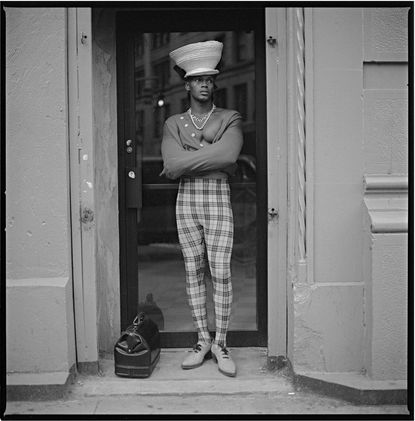
When Guinness launched an advertisement and documentary two years ago featuring Congolese blue-collar workers transforming into a dashing flock of unlikely fashion stars, the world was captivated. The Society of Elegant Persons of the Congo, or 'Sapeurs' as they are known, is just one faction of black dandyism, a sartorial subculture with less than savoury origins in slave culture. Today, dandyism has become an empowering symbol of race and identity within the black community.
This fascinating worldwide phenomenon is at the centre of a new exhibition curated by writer and broadcaster Ekow Eshun, opening today at The Photographers’ Gallery in London. ‘Made You Look: Dandyism and Black Masculinity’ spans studio and street photographs, celebrating dandies from Bamako to London. Eshun explains, ‘The dictionary definition of a dandy is a man “unduly concerned with looking stylish and fashionable.” But dandyism, as practised by the likes of Lord Byron, Oscar Wilde and Charles Baudelaire, is also about using dress to deliberately flout conventional notions of class, taste, gender and sexuality.’
Fashion is by its very nature a form of self-conscious performance – a ritual of adornment and projection of one’s identity. Here, the dandies are both spectacle and stars, bedecked in brogues, dickie bows and flares; vivid African prints splashed over European-style suits. In ‘Made You Look’, each photographer explores different facets of the ‘radical personal politics’ of black dandyism. 'For the most part the men featured in the show aren’t wearing the finest of clothes. They seem less concerned with what they wear than with how they wear it,' says the curator.
British photographer Colin Jones’ remarkable ‘Black House’ series centres on the ‘careful and discreetly extravagant styling’ of marginalised young men in a north London hostel on the Holloway Road. Jones has said: ‘Over the four years of my visiting the "Black House", the reality of what I had been doing was only made clear to me when I was asked: "Which part of America did you take these photographs?" "Holloway Road, about three miles from where we were both standing." I now realise that it could have been anywhere in the world where a small community is threatened and afraid.’
Liz Johnson Artur, meanwhile, has spent the past 30 years charting dandies in Jamaica and Detroit, while Jeffrey Henson Scales turns his lens on dandy culture in New York. Artist Isaac Julien investigates notions of sexuality and gender with stills from his 1989 film, Looking for Langston, which explores black gay desire during the liberal explosion of the Harlem Renaissance in the 1920s. Kristin-Lee Moolman explores modern dandyism with newer works captured in South Africa, casting androgynous characters and dismantling stereotypes.
For Eshun, it's a topic that hits particularly close to home. 'As a teenager having to grapple for the first time with the force of the white gaze, I’d ask myself this question: "how do you live without fear or debilitating anger in a world where you’re reminded always that your body doesn’t belong to you?"', he says. 'The answer, as proposed by the works in [the exhibition], is to demand to be seen on your own terms, via the style and attitude that announces your ambitions and desires, your sense of pride and inner belief.'
Eshun adds, 'It is about confounding expectations about how black men should look or carry themselves in order to establish a place of personal freedom; a place beyond the white gaze, where the black body is a site of liberation not oppression.' There’s much to rue about the lack of diversity in fashion – but exhibitions like this one remind us we also have plenty to celebrate.
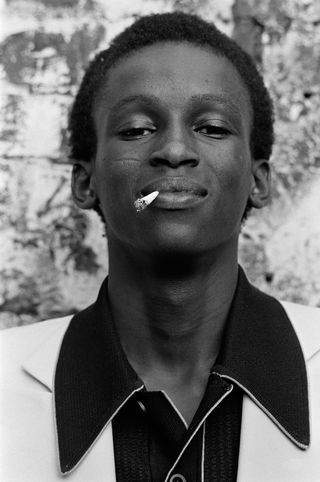
The exhibition spans studio and street photographs, celebrating dandies from Bamako to London. Pictured: The Black House, by Colin Jones, 1973–1976. Courtesy the artist and Autograph ABP
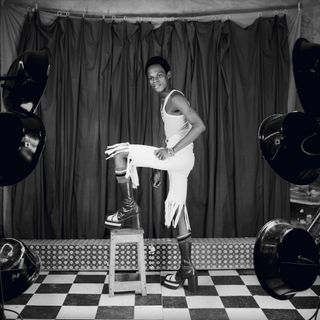
Dandies are both spectacle and stars, bedecked in brogues, dickie bows and flares; vivid African prints splashed over European-style suits. Pictured: Self Portrait from ‘70’s Lifestyle’, by Samuel Fosso, 1973–1977. Courtesy the artist and JM Patras/ Deutsche Bank Art Collection
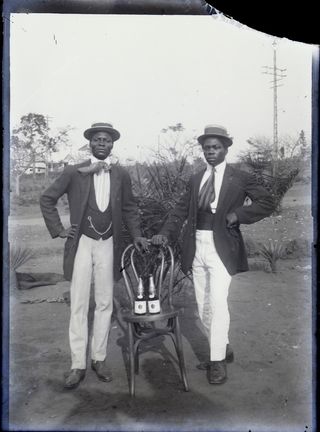
In ‘Made You Look’, each photographer explores different facets of the ‘radical personal politics’ of black dandyism. Pictured: Unattributed, c.1904. Courtesy The Larry Dunstan Archive

Liz Johnson Artur has spent the past 30 years charting dandies in Jamaica and Detroit. Pictured: Untitled, from Black Balloon Archive, by Liz Johnson Artur. Courtesy the artist
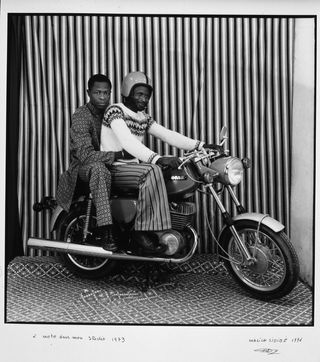
On the motorbike in my studio, by Malick Sidibé, 1973. Courtesy the artist and CAAC – The Pigozzi Collection, Geneva

Artist Isaac Julien investigates notions of sexuality and gender with stills from his 1989 film, Looking for Langston, which explores black gay desire during the liberal explosion of the Harlem Renaissance in the 1920s. Pictured: Homage Noir, from Looking for Langston, by Isaac Julien, 1989/2016. Courtesy the artist

Kristin-Lee Moolman explores modern dandyism with newer works captured in South Africa, casting androgynous characters and dismantling stereotypes. Pictured: Wayne Swart (from the OATH lookbook), by Kristin-Lee Moolman, 2015. Courtesy the artist
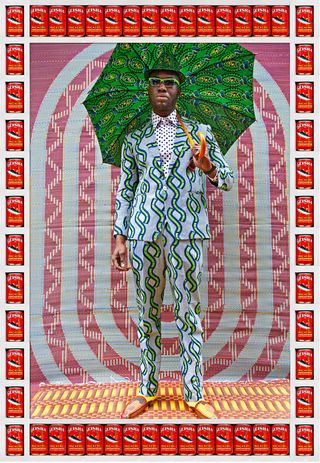
There’s much to rue about the lack of diversity in fashion – but exhibitions like this one remind us we also have much to celebrate. Pictured: Afrikan Boy, by Hassan Hajjaj, 2012. Courtesy the artist
INFORMATION
‘Made You Look: Dandyism and Black Masculinity’ runs until 25 September. For more information, visit The Photographers’ Gallery website
ADDRESS
The Photographers' Gallery
16–18 Ramillies Street
London, W1F 7LW
Wallpaper* Newsletter
Receive our daily digest of inspiration, escapism and design stories from around the world direct to your inbox
-
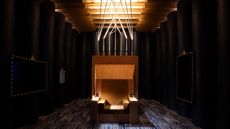 David Lynch presents 'A Thinking Room' at the Salone del Mobile
David Lynch presents 'A Thinking Room' at the Salone del MobileHere's a first look at the David Lynch Salone del Mobile 2024 installation, a cinematic experience within the fair curated by Antonio Monda
By Laura May Todd Published
-
 Riva El-Iseo is the legendary boat builder’s first fully-electric motor yacht
Riva El-Iseo is the legendary boat builder’s first fully-electric motor yachtThe Riva El-Iseo electric speedboat blends classic Italian lines with a silent, powerful and zero-emission powertrain
By Jonathan Bell Published
-
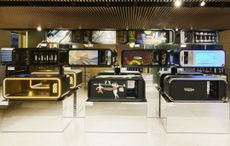 Technogym Home Bench 40 ways: designers interpret the home exercise classic
Technogym Home Bench 40 ways: designers interpret the home exercise classicTechnogym marks its 40 anniversary with 40 special editions of its Home Bench created in collaboration with international creatives
By Rosa Bertoli Published
-
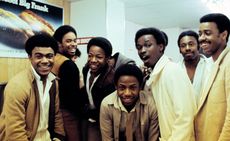 V&A East announces ‘The Music Is Black: A British Story’, its first major exhibition
V&A East announces ‘The Music Is Black: A British Story’, its first major exhibitionLondon’s V&A East to examine the cultural impact of Black British music with its inaugural exhibition in 2025
By Hannah Silver Published
-
 Gathering: the new Soho gallery blending art and social activism
Gathering: the new Soho gallery blending art and social activismGathering, the newest gallery resident in London’s Soho, will focus on contemporary art exploring systemic social issues. Ahead of Tai Shani’s inaugural show, we speak to founders Alex Flick and Trinidad Fombella about their vision for the gallery
By Harriet Lloyd-Smith Last updated
-
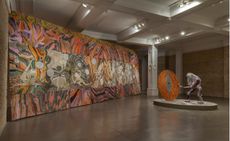 Emma Talbot explores Greek myth and femininity at Whitechapel Gallery
Emma Talbot explores Greek myth and femininity at Whitechapel GalleryIn ‘The Age/L’Età’, her Max Mara Art Prize show at Whitechapel Gallery, Emma Talbot imagines a reality where violence is overturned by resolution, nurtured by an elderly female protagonist
By Martha Elliott Last updated
-
 Cornelia Parker’s major Tate Britain survey explores British fragility
Cornelia Parker’s major Tate Britain survey explores British fragilityAt Tate Britain, Cornelia Parker’s first London survey show dissects politics and history and reframes everyday life
By Martha Elliott Last updated
-
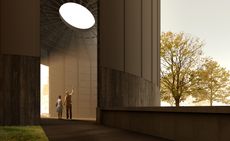 Theaster Gates’ design for Serpentine Pavilion 2022 revealed
Theaster Gates’ design for Serpentine Pavilion 2022 revealedThe American artist and urban planner reveals his plans for the Serpentine Pavilion 2022. Black Chapel has spirituality, music and community at its heart
By TF Chan Last updated
-
 Courtauld Gallery gears up for November reopening following modernisation
Courtauld Gallery gears up for November reopening following modernisationLondon's Courtauld Gallery at Somerset House is set for November reopening following extensive modernisation by architecture studio Witherford Watson Mann
By Ellie Stathaki Last updated
-
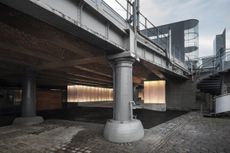 Carmody Groarke revives Victorian vaulted space for Manchester museum
Carmody Groarke revives Victorian vaulted space for Manchester museumArchitects Carmody Groarke revive a vast, brick space for the flexible new Special Exhibitions Gallery at the Science and Industry Museum in Manchester
By Ellie Stathaki Last updated
-
 The London art exhibitions to catch before 2021
The London art exhibitions to catch before 2021Really good art (virtually exhibited or otherwise) has been a form of true escapism in 2020. As the year wraps up (thank goodness!) we round up the best shows to tick off your must-see list in London before the New Year
By TF Chan Last updated